 Image search results - "okaya" Image search results - "okaya" |

JR Okaya Station. There is no tourist info office here.Small station, but close to Lake Suwa.
|
|

Numerous azalea bushes
|
|

JR Okaya Station platform. JR岡谷駅
|
|

Canora Hall, venue for the Okaya International Exchange Association's 15th anniversary festival.
|
|

JR Okaya Station platform
|
|

Lobby of Canora Hall
|
|

View from train station overpass
|
|

Entrance to the smaller hall
|
|

Lala store in front of Okaya Station. A small city hall office inside might be able to give tourist info.
|
|

Reception counter with programs and newsletters in different languages.
|
|

Exhibition area featuring native costumes, photos, etc.
|
|
|

Lake Biwa Rowing Song (Biwako Shuko no Uta) exhibition panel by Philbert Ono at Okaya, Nagano.
|
|

Lake Biwa Rowing Song Exhibition panels. 「琵琶湖周航の歌」英語版の展示コーナー
|
|

Exhibition panels 展示コーナー
|
|

New Zealand panel
|
|
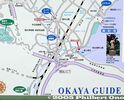
Okaya map
|
|

Brazilian school
|
|

Taiko drummers from Okaya Roman Taiko
|
|

Full-house audience. Many international groups provided free entertainment.
|
|

Indonesian dance by Miyazaki Ani
|
|

Brazilian Dance by Ashinaga Gakuen Brazilian School
|
|

African drumming and dance
|
|

African dance, a real crowd pleaser.
|
|

In Okaya, Nagano, Nakamura Naoko singing "Lake Biwa Rowing Song." This is the first time this English version was sung in public outside Shiga Prefecture.
|
|

Nakamura Naoko singing "Lake Biwa Rowing Song." The first Japanese person to sing the song in public. 「琵琶湖周航の歌」の英語版も歌われた。
|
|

Nakamura Naoko singing "Lake Biwa Rowing Song" up to verse 3. 中村直子さんが三番まで歌われた。
|
|

Canora Boys and Girls Chorus
|
|

Grand finale dance called Itomachi Ko-uta
|
|

Willow tree-lined canal
|
|

Seto Ohashi Bridge under construction in 1986.
|
|

Lake Suwa
|
|

Doga-kan-dori street leading to Ilf Plaza.
|
|
|
|

Ilf Plaza, with shops and a culture center. イルフプラザ
|
|

Lake Suwa
|
|
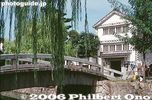
Bridge to Archeological Museum. Kurashiki is a National Important Traditional Townscape Preservation District (重要伝統的建造物群保存地区). 倉敷考古館
|
|
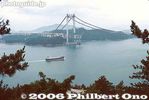
建設中の瀬戸大橋
|
|

Lake Suwa and mountains
|
|

Ilf Doga Museum イルフ童画館
|
|
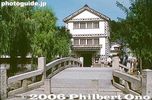
Bridge to Archeological Museum 倉敷考古館
|
|
|

Lake Suwa and mountains
|
|

Ilf Doga Museum, works by Takei Takeo 武井武雄作品展示室
|
|
|
|

Lake Suwa and mountains
|
|

Ilf Douga Museum, works by Takei Takeo 武井武雄余技作品展示室
|
|
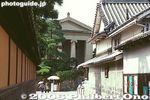
Looking toward Ohara Art Museum.
|
|
|
|

Ilf Doga Museum
|
|
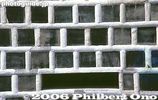
Namako-kabe wall
|
|

Kurashiki end
|
|
|

Ramu-ramu Coffee Shop in Ilf Doga Museum 喫茶ラムラム
|
|
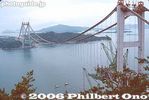
The double decker still not installed.
|
|
|

Seto Ohashi Bridge under construction in 1986, Kurashiki.
|
|

Lakeside park
|
|

Seto Ohashi Bridge under construction in 1986, Kurashiki. 瀬戸大橋
|
|

Lakeside park
|
|
|

Lakeside park
|
|

Shimotsui Seto Bridge to Hitsuishijima island
|
|

Lake Suwa
|
|

Start of the double decker from Kurashiki.
|
|

Lake Suwa
|
|

Start of the double decker bridge.
|
|

Lake Suwa and bridge
|
|
|
|
|
|

Bridge across Kamaguchi Floodgate
|
|
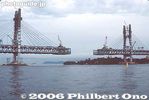
Boat cruise for seeing the bridge.
|
|

Bridge across Kamaguchi Floodgate
|
|
|
|

Passed under the bridge.
|
|

Kamaguchi Floodgate
|
|
|

Carp caught from Lake Suwa
|
|
|

Lake Suwa during a warm winter.
|
|

Shimotsui Station
|
|
|
|
|
|

Oguchi Taro monument
|
|
|

Locomotive from Ohio, USA used in the 1930s.
|
|

Sculpture in lakeside park
|
|
|

Water fountain
|
|
|

Lakeside park
|
|

Ducks
|
|

Ducks fly away on Lake Suwa.
|
|

Ducks fly to safety.
|
|

Sculpture
|
|

Mother and child sculpture
|
|
|

Lakeside park
|
|

Playground
|
|

Lakeside park
|
|
|

Water fountain and azaleas in spring
|
|

Water fountain and azaleas in spring
|
|

Map of lake shore area
|
|
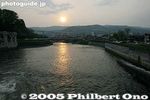
Tenryu River at sunset
|
|

Along Tenryu River in winter.
|
|

Bridge with a mountain design, over Tenryu River.
|
|

Onbashira manhole in Okaya, Nagano.
|
|
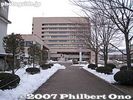
Okaya City Hall 岡谷市役所
|
|

Oguchi Taro Statue and Biwako Shuko no Uta Song Monument. On the shore of Lake Suwa, Okaya, Nagano. 歌碑と小口太郎銅像This was where I first heard the song, "Biwako Shuko no Uta." In May 2004, I was in Suwa, Nagano Pref. to see and photograph the Onbashira Festival (held every 6 years). My hotel was in the neighboring city of Okaya on the shores of Lake Suwa.
I walked around the lake and came across this statue of Taro Oguchi and song monument. I was very surprised when I saw the word "Biwako" (Lake Biwa). This was Nagano, not Shiga, so it was most unexpected to see "Biwako" here. I read the song lyrics on the monument and was surprised and delighted to see the names of well-known places in Shiga.
The monument even had music box (seen on left) where you could hear three versions of the song. I immediately found it intriguing.
|
|

Taro Oguchi Statue and Song Monument in winter.
|
|

About Taro Oguchi.The song was written as a collaboration among boatmates, but Taro Oguchi (小口太郎) (1897-1924) is credited as being the main song writer. He was born in 1897 (Meiji 30) in Minato-mura village, now part of Okaya city on the shores of Lake Suwa in Nagano Prefecture.
He grew up in a loving and respected family and demonstrated an early talent for writing, music (violin and shakuhachi), and sports (judo, skiing, skating). Since he was the eldest son expected to take over the family home, there was opposition for him to go away for college. However, his father was persuaded to allow Taro to apply for college at the elite No. 3 High School (later to become Kyoto University). It was one of nine college-level schools in Japan, the No. 3 school being one of the most elite.
Contrary to family expectations, Taro passed the entrance exam, went school in Kyoto in 1914 and joined the rowing and speech clubs. In 1917, he wrote the famous song about Lake Biwa which first went public in 1918.
|
|

Statue of Oguchi Taro
|
|

Statue of Oguchi Taro 小口太郎銅像Short walk from JR Okaya Station. Walk toward the shore of Lake Suwa. The monument is near the mouth of Tenryu River.
|
|

Closeup of Taro Oguchi statueHe graduated in 1919 and furthered his studies at Tokyo Imperial University (now University of Tokyo) in the science department. In 1921, he invented the wired and wireless multiplex telegraph and telephone system which was patented in eight countries. He was an extremely bright young man with a promising future.
In 1922, he entered the university's aeronautical research institute as a researcher. However, his life soon took a downturn from 1923 when he received a military conscription notice. A love interest for marriage also did not work out as desired. His physical health deteriorated and he terminated his own life the following year in 1924 at age 26.
|
|

Rear view, looking toward Lake Suwa.
|
|
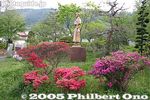
Side view of Taro Oguchi Statue and Song Monument in spring with azaleas.
|
|

Side view of Taro Oguchi Statue and Song Monument in winter. 小口太郎顕彰碑
|
|

Music box. Three versions of the song can be heard through a speaker by pressing a button. Also see the video at YouTube to hear the song.The monument included a music box where you could listen to three versions of the song through a speaker. I was immediately fascinated by the song when I heard it (together with the wind and waves of Lake Suwa).
|
|

Song monument with the entire lyrics of Biwako Shuko no Uta. On the shore of Lake Suwa in Okaya, Nagano. 琵琶湖周航の歌 全歌詞碑
|
|

Listen to one of the song versions here
|
|

Biography of Oguchi Taro. 小口太郎顕彰碑
|
|

Area of the Oguchi Taro monument (seen on left), in winter.
|
|

Road sign pointing to the Oguchi Taro statue
|
|

Smaller statue of Oguchi Taro inside Okaya City Hall, next to the entrance.
|
|

Neighborhood of Minato where Oguchi Taro lived.
|
|

Oguchi Taro's house (red roof). He lived on the 2nd floor. On the left is a storehouse.
|
|

Path to shrine
|
|
|

Behind this small shrine is a large graveyard full of Oguchi family gravestones.
|
|

Oguchi Taro's grave on right.
|
|

Oguchi Taro's gravestone. He is buried together with his younger brother Sadao.
|
|

Oguchi Taro's gravestone in foreground.
|
|

Oguchi cemetary. This neighborhood is full of Oguchi families, not necessarily related to each other.
|
|

Oguchi graves.
|
|

Scenic view of Lake Suwa from graveyard.
|
|
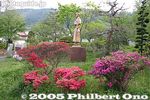
Oguchi Taro song monument
|
|
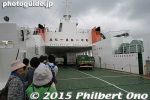
Ferry at Uno Port going to Naoshima.
|
|
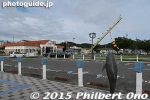
Back at Uno Station in Okayama.
|
|
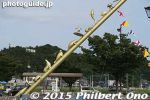
Uno Station in Okayama.
|
|
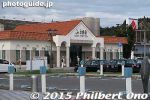
Uno Station in Okayama.
|
|
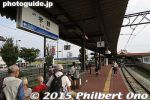
Uno Station platform.
|
|

Adjacent to Okayama Castle, Korakuen is one of Japan's three most famous gardens along with Kairakuen in Mito, Ibaraki and Kenrokuen in Kanazawa, Ishikawa. Korakuen was completed in 1700 after 14 years of construction.
|
|

Korakuen Garden with Okayama Castle in the background.
|
|
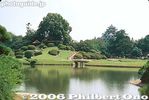
Older photo of Okayama Castle as seen from Korakuen Garden
|
|
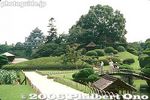
Older photo of Okayama Castle as seen from Korakuen Garden, Okayama
|
|
|
|
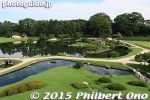
Korakuen Garden, Okayama
|
|
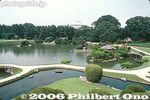
An older photo of Korakuen Garden
|
|
|

An older photo of Korakuen Garden, Okayama 後楽園
|
|
|
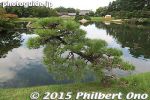
Lots of pine trees
|
|
|
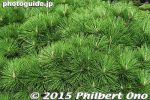
Pine tree needles
|
|
|
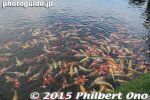
Koi carp
|
|
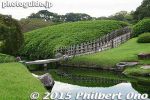
Large azalea bush
|
|
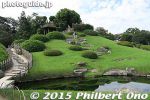
Artificial hill or tsukiyama gives a good view of Korakuen Garden.
|
|
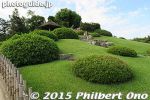
Going up the tsukiyama hill in Korakuen Garden.
|
|
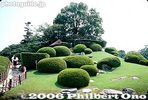
Tsukiyama hill in Korakuen Garden for sweeping views of the garden.
|
|
|
|
|
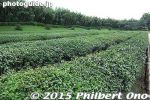
Tea field
|
|
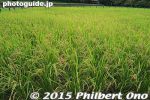
Rice field
|
|
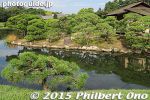
Pine trees and pond
|
|
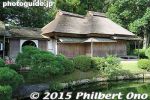
Tea house
|
|
|
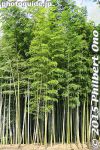
Tall bamboo grove
|
|
|
|
|
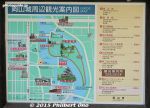
Map of Korakuen Garden and Okayama Castle area
|
|
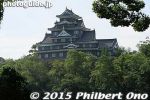
Nicknamed the "Raven Castle" (Karasu-jo) due to its black exterior, it is a contrast with the "White Heron" Himeji Castle in neighboring Hyogo Prefecture. The castle is adjacent to Korakuen Garden.
|
|
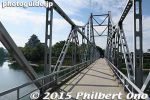
Bridge to Okayama Castle from Korakuen Garden.
|
|
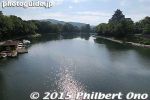
Okayama Castle and Asahi-gawa River serving as a natural moat. 旭川
|
|

An older photo.
|
|
|
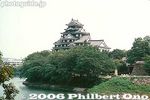
Older photo of Okayama Castle
|
|

Older photo of Okayama Castle
|
|
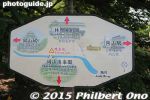
Directions
|
|
|

An older photo.
|
|

Map of Okayama Castle
|
|
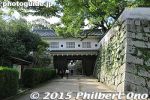
One entrance to Okayama Castle
|
|
|
|
|
|
|
|
|
|
|
|

Part of a stone wall
|
|
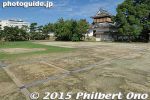
Where the castle palace once stood.
|
|
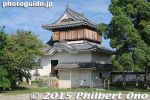
The only remaining original building of Okayama Castle.
|
|
|
|
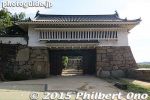
Akazu-no-mon Gate
|
|
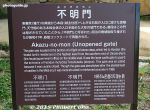
About Akazu-no-mon Gate
|
|
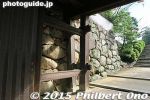
Akazu-no-mon Gate
|
|
|
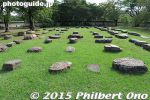
Foundation stones
|
|

Okayama Castle 岡山城
|
|
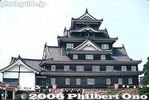
Older photo of Okayama Castle 岡山城
|
|

Inside Okayama Castle. Basically a local history museuam. 岡山城
|
|
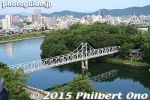
Bridge to Korakuen Garden
|
|
|
|
|
|
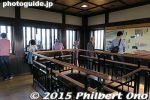
Top floor of Okayama Castle 岡山城
|
|
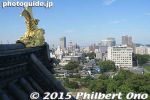
Shachihoko roof ornament on Okayama Castle.
|
|
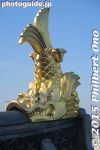
Shachihoko roof ornament on Okayama Castle.
|
|
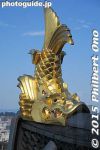
Shachihoko roof ornament on Okayama Castle.
|
|
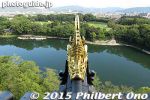
Shachihoko roof ornament on Okayama Castle.
|
|

View of Korakuen Garden from Okayama Castle tower
|
|
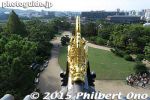
Shachihoko roof ornament on Okayama Castle.
|
|
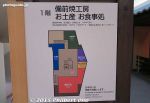
1st floor of Okayama Castle has gift shop. 岡山城
|
|
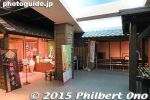
1st floor of Okayama Castle
|
|
|
|
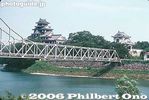
Okayama Castle and bridge to Korakuen Garden
|
|
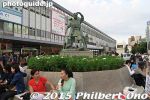
JR Okayama Station is adorned with Momotaro, the legendary Peach Boy associated with Okayama.
|
|
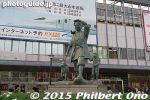
Statue of Momotaro Peach Boy in front of JR Okayama Station's east side.
|
|
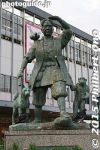
Statue of Momotaro Peach Boy in front of JR Okayama Station's east side.
|
|
|
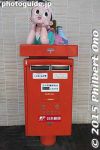
Momotaro Peach Boy on a mailbox.
|
|
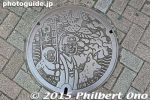
Momotaro Peach Boy on a manhole in Okayama.
|
|
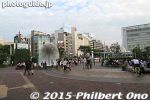
Plaza in front of JR Okayama Station.
|
|
|
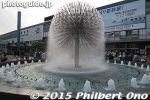
Fountain in front of JR Okayama Station.
|
|
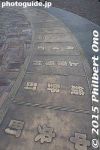
Names of Okayama towns.
|
|
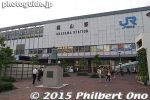
JR Okayama Station.
|
|
|
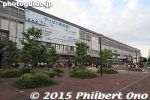
JR Okayama Station.
|
|
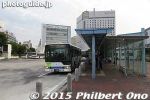
Bus stop in front of JR Okayama Station.
|
|
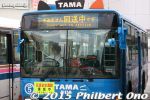
"Sorry, not in service." What a polite bus in Okayama! Even in Japanese, it actually apologizes for not being in service. Also notice the cat ears on the roof, the painted whiskers, and the nickname "Tama Bus."Nicknamed after a stray cat named Nitama that was found in Okayama and adopted as the stationmaster of Idakiso Station in Wakayama. The original and nationally famous cat stationmaster named Tama at Kishi Station on the same train line died earlier this year. So Nitama took over. So happens that the train line's parent co. is the same as this bus company's based in Okayama.
|
|
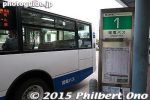
Okaden Bus
|
|
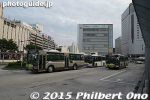
Bus stop in front of JR Okayama Station.
|
|
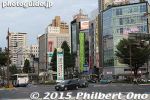
Street in front of JR Okayama Station.
|
|
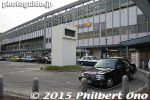
Taxi stand in front of JR Okayama Station.
|
|
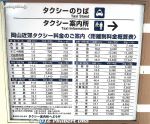
Taxi rates from JR Okayama Station.
|
|
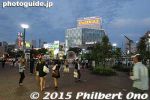
JR Okayama Station in the evening.
|
|

Inside JR Okayama Station are shops and restaurants.
|
|
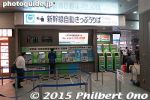
JR Okayama Station is also a shinkansen station.
|
|
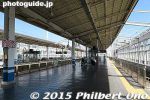
JR Okayama Station shinkansen platform.
|
|
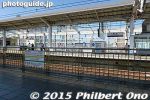
JR Okayama Station shinkansen platform.
|
|
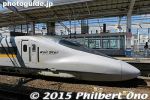
JR Okayama Station shinkansen.
|
|
|
|